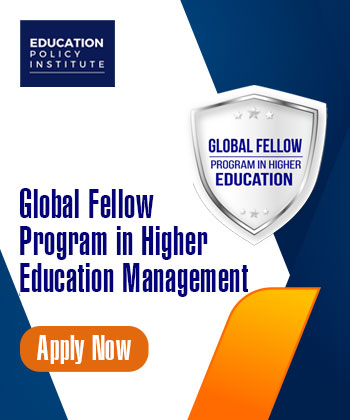Learning Management Systems(LMS) are web-related platforms developed to support the delivery, administration, and tracking of online learning programs. In recent years, the implementation of LMS in higher education has quickly enhanced, which resulted in offering students and educators more opportunities to learn and teach online.
This article will discuss the evolution of LMS in higher education, and how they have transformed online learning and education management services.
Early Learning Management Systems
The early LMS were simple tools that were designed to deliver and manage content online. These systems allowed educators to upload course materials and resources for students to access remotely. Examples of early LMS include WebCT, Blackboard, and Moodle. These systems were basic and only provided a few functionalities such as content delivery, course registration, and assessment.
However, the popularity of online learning courses quickly grew, and so did the demand for more advanced LMS. In response to this, LMS providers started to integrate latest features like video conferencing, live chat, and discussion forums.
Modern Learning Management Systems
Today, LMS has evolved into sophisticated systems that are capable of handling complex online learning environments. Modern LMS are cloud-based, accessible from any device, and offer features that enhance teaching, learning, and student engagement.
Some of the modern LMS features include:
-
Course Management and Delivery
Modern LMS provides educators with tools to create and manage course content, assignments, and quizzes. They offer educators to make multimedia content that can be provided to the students in many different ways, like text, video, and audio.
-
Collaboration and Communication Tools
Modern LMS gives tools for real-time communication and collaboration, like video conferencing, discussion forums, and chat rooms. These features encourage student engagement and interaction, making the learning experience more enjoyable and interactive.
-
Assessment and Evaluation Tools
Modern LMS provides educators with tools to create, manage, and grade quizzes, assignments, and exams. These systems automatically grade quizzes and exams, providing students with immediate feedback and allowing educators to track student progress and performance.
-
Analytics and Reporting Tools
Modern LMS provides educators with access to analytics and reporting tools that allow them to track student engagement and performance. These tools offer better details into student behavior that can be utilized to enhance the teaching and learning outcomes.
Components of a LMS
Learning Management Systems (LMS) are software platforms designed to manage, deliver, and track online learning content. LMS has several components that enable educators to create and deliver online courses effectively.
The following are the critical components of a LMS:
Content Management System (CMS)
The Content Management System (CMS) is the core of the LMS, giving the educators to create and manage programs content. The CMS gives several features, such as content creation, editing, and organization tools, which enable educators to create rich and interactive online courses. The CMS also allows educators to deliver content in various formats, such as videos, audios, text, and images.
-
Student Management System
The Student Management System (SMS) gives the educators to take care of student data, such as enrollment, attendance, grades, and progress. The SMS offers various features, such as student profiles, grade books, and progress reports, which enable educators to monitor student performance effectively. The SMS also allows educators to communicate with students, such as sending emails, reminders, and feedback.
-
Assessment and Evaluation System
The Assessment and Evaluation System (AES) gives educators to make and deliver assessments, like quizzes, exams, and assignments. The AES offers various features, such as automated grading, rubrics, and feedback tools, which enable educators to evaluate student performance effectively. The AES also allows educators to track student progress and identify areas where students may need additional support.
-
Communication and Collaboration Tools
The Communication and Collaboration Tools (CCT) enable educators and students to communicate and collaborate effectively. The CCT gives many features, like discussion forums, chat rooms, video conferencing, and social media integration that enable educators to engage students in resourceful discussions and collaborative works. The CCT also allows educators to provide feedback and support to students, promoting a positive learning experience.
-
Reporting and Analytics System
The Reporting and Analytics System (RAS) allows educators to monitor and analyze student data to improve course design and delivery. The RAS offers various features, such as student performance reports, course evaluation surveys, and usage statistics, which enable educators to identify areas of strength and weakness in the course. The RAS also allows educators to make data-driven decisions to improve student learning outcomes.
Benefits of Learning Management Systems in Higher Education
The use of LMS in higher education has revolutionized the way students learn and educators teach. Some of the benefits of LMS in higher education include:
-
Flexibility and Accessibility
LMS has made education more accessible to students. Online programs can be accessed from anywhere, and students can complete them at their own pace. This has made education more flexible, allowing students to balance their studies with work and other commitments. The CMS enables educators to create and deliver online courses that are flexible and accessible. The CMS gives educators to make content in several formats, like videos, audios, and text that enables students to learn at their own pace and in their chosen learning style. The SMS component of LMS allows educators to manage student data, such as enrollment, attendance, and grades, which enables students to access course materials and assignments anytime, anywhere.
-
Cost-Effective
LMS has made education more cost-effective. Online programs are usually highly affordable than traditional face-to-face programs. Additionally, LMS eliminates the need for physical infrastructure, such as classrooms and libraries, reducing the cost of delivering education.
-
Student Engagement
LMS has improved student engagement. The collaboration and communication tools provided by LMS allow students to interact with their peers and educators in real-time. This creates a more engaging and interactive learning experience, which is more enjoyable and effective.
-
Personalization and Engagement
LMS has made education more personalized. The analytics and reporting tools provided by LMS allow educators to track student performance and behavior. This data is useful for personalized learning, offering the students with a more advanced learning experience. The AES component of LMS enables educators to create and deliver assessments that are personalized and engaging. The AES allows educators to create assessments that are adaptive, meaning they adjust to the student's level of understanding, promoting a more personalized learning experience. The Communication and Collaboration Tools enables educators and students to communicate and collaborate effectively, promoting a more engaging and interactive learning experience.
-
Improved Learning Outcomes
The RAS component of LMS enables educators to monitor and analyze student data to improve course design and delivery, promoting improved learning outcomes. The RAS offers the educators to identify spaces of strength and weakness in a program, giving them with the opportunity to create data-driven decisions to enhance the student learning results.
Conclusion
The evolution of LMS in higher education has transformed the way we learn and teach online. The modern LMS offers educators and students more opportunities to collaborate, communicate, and engage in online learning. LMS has also made education more accessible, cost-effective, personalized, and engaging. However, the use of LMS also comes with some challenges, such as technical issues, lack of instructor training, and online learning barriers.
Despite these challenges, the benefits of LMS in higher education far outweigh the costs. LMS has revolutionized the ways to manage education, offering the students and educators with a more flexible, accessible, engaging as well as learning experience.
As technology continues to evolve, one can expect LMS to become more upgraded, offering better ways to teach and learn online.
Latest
Trends blogs
- Education and Industry Alignment: Rethinking Skill-Based Curriculum
- Education Policy Reform Amid Global Challenges and Shifting Standards
- Certification and Credentials: The New Fuel for Career Growth
- Technology in Outcome-Based Education: Driving Change in Higher Education





